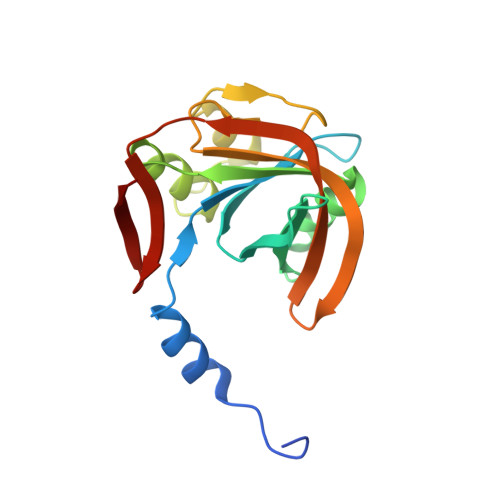Identification, characterization, and structure/function analysis of a corrin reductase involved in adenosylcobalamin biosynthesis
Lawrence, A.D., Deery, E., McLean, K.J., Munro, A.W., Pickersgill, R.W., Rigby, S.E., Warren, M.J.(2008) J Biol Chem 283: 10813-10821
- PubMed: 18263579
- DOI: https://doi.org/10.1074/jbc.M710431200
- Primary Citation of Related Structures:
3CB0 - PubMed Abstract:
Vitamin B(12), the antipernicious anemia factor, is the cyano derivative of adenosylcobalamin, which is one of nature's most complex coenzymes. Adenosylcobalamin is made along one of two similar yet distinct metabolic pathways, which are referred to as the aerobic and anaerobic routes. The aerobic pathway for cobalamin biosynthesis proceeds via cobalt insertion into a ring-contracted macrocycle, which is closely followed by adenosylation of the cobalt ion. An important prerequisite for adenosylation is the reduction of the centrally chelated metal from Co(II) to a highly nucleophilic Co(I) form. We have cloned a gene, cobR, encoding a biosynthetic enzyme with this co(II)rrin reductase activity from Brucella melitensis. The protein has been overproduced, and the resulting flavoprotein has been purified, characterized, and crystallized and its structure determined to 1.6A resolution. Kinetic and EPR analysis reveals that the enzyme proceeds via a semiquinone form. It is proposed that CobR may interact with the adenosyltransferase to overcome the large thermodynamic barrier required for co(II)rrin reduction.
Organizational Affiliation:
Protein Science Group, Department of Biosciences, University of Kent, Canterbury, Kent CT2 7NJ, United Kingdom.















